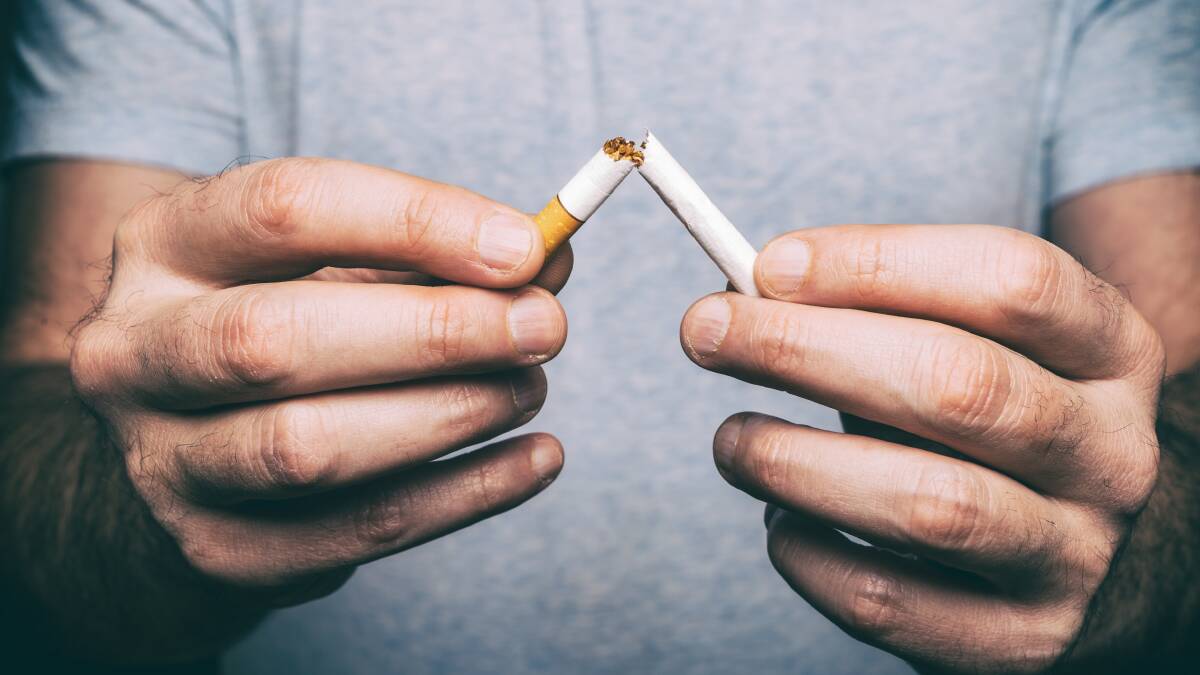
If you smoke, exercise-induced breathlessness is something you’ll likely be familiar with.
Subscribe now for unlimited access.
or signup to continue reading
“Smokers start to find that walking the dog, walking uphill, even going up the stairs at the rugby is getting harder. Their golf game gets harder, that sort of thing,” said Sleep and Respiratory Medicine Physician Dr Scott Claxton of Genesis Sleep & Respiratory Care WA.
Exercise-related breathlessness is a red flag for smoking-related disease, and it’s not something to sweep under the rug.
“Breathlessness can be a sign of Chronic Obstructive Pulmonary Disease, or COPD,” said Dr Claxton. This is an umbrella term for smoking-induced lung disease, including emphysema, where airflow is limited.
“If you’re a smoker, the two tests to strongly consider are a spirometry – a simple breathing assessment – and a CT scan of the lungs,” Dr Claxton said.
By measuring the volume and flow of air traveling in and out of the lungs with a mouthpiece, a spirometry determines whether a smoker has COPD. “It’s useful for diagnosing scarring and narrowing of the air passages in the lungs,” he said. An inhaler might serve as appropriate treatment.
Dr Claxton also recommended a low-dose CT scan every 12 months for high-risk lung cancer patients - those aged 50-75, who have smoked a pack a day for 20 years. This gives more information than a chest X-ray, and with the same radiation level. “For high-risk patients it’s worth doing the screen, as the cancer is more likely to be found before it has spread elsewhere.
Although there can be false positives. “Our lungs get exposed to all sorts of things,” Dr Claxton said. “This can result in nodules forming, or other changes. So one problem with a CT scan is that most things you’ll find are benign, but you don’t know that until you follow them up every 12 months.
“Currently there is no formal lung cancer screening program with a good follow up mechanism and a strategy for identifying the target population like there is for example with breast cancer,” Dr Claxton said.
“Although if everybody stopped smoking, screening for lung cancer wouldn’t be necessary. We shouldn’t have to be screening for a preventable disease.”
The Australian Bureau of Statistics found that 28.2 per cent of 18-44 year-olds were smokers in 2001, versus 16.3 per cent in 2014-15. “It’s not the thing to do anymore,” Dr Claxton said, albeit acknowledging that quitting is “really, really hard” for those who started smoking when it was ‘cool’.
“Quitting doesn’t go well if everyone but you wants you to quit.
“I say to my patients, you’re in hospital because of your respiratory infection, because you’re smoking. If you keep smoking you’re going to keep landing up here and things are going to get worse faster.”
- Healthshare.com.au is a joint venture with Fairfax Media designed to improve health outcomes for regional Australians.

